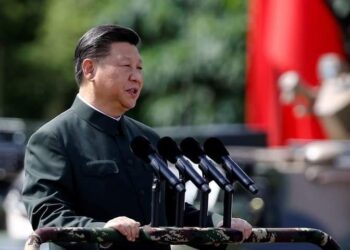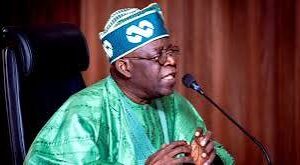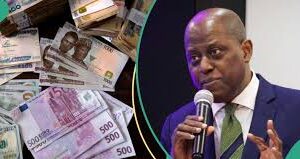The United States of America has warned that increasing Chinese loans could give China the ability to sway the Nigerian government. BLESSING ANARO reports with agencies.
Debt trap
Immediate past president Muhammadu Buhari had a penchant to collect loans for almost everything that has to do with governance.
This has inadvertently plunged Nigeria into a debt trap of a sort that may be difficult to exit.
It was president Olusegun Obasanjo who in the year 2006 paid almost $20 billion to two giant international syndicates: Paris Club and London Club of Creditors to settle her foreign debts. This transfer of wealth by a relatively poor nation contradicts the entire prudent financial judgment and rudimentary economic disposition preached to Nigeria by the rich donor nations that babbles about the ills of capital flight in developing nations.
Paris Club of creditors
The government of President Obasanjo, the Nigerian ex-Head of state made the arrangement and secured the purported $18 billion debt relief for Nigeria from the Paris Club of Creditors, which became the inducement for the country to pay off her $36 billion foreign debt. Nigeria’s total foreign debt stood at $35.916billion as of June 2005. The largest chunk of the debt $31billion was owed to 15 of the 19 creditor-countries of the Paris Club.
On Friday, April 21, 2006 Nigeria paid the final installment of $4.518 billion to exit the Paris Club. Earlier, the country paid off $12.4 billion in arrears and debts as was stipulated to fulfill arrangement and concord reached with the Paris club in June 2006. In addition, the federal government of Nigeria finally paid off the last batch of outstanding debts owed to the London Club amounting to $2.15 billion. For the settlement of both Paris Club and London Club of Creditors, Nigeria paid off almost $20 billion.
A new heavyweight in providing emergency funds
This is as analysts told New York Times recently that Beijing is emerging as a new heavyweight in providing emergency funds to debt-ridden countries, catching up to the I.M.F. as a lender of last resort.
The US Department of State’s document on “Integrated Country Strategies,” claimed China provided sub-prime funding for a number of infrastructure projects in the nation.
A subprime loan, according to the Corporate Finance Institute, is one that is provided to borrowers who do not meet the requirements for conventional loans at an interest rate above prime.
The text of the letter stated, in part, that “Meanwhile, China offers sub-prime financing for a range of infrastructure projects, with the potential to… add unnecessarily to Nigeria’s debt burden and… increase Chinese influence over the Nigerian government.”
Nigeria is said to owe the Exim Bank of China $4.34 billion as of March 2023. While the most recent study on Nigeria’s railway system from the US-based Fitch Solutions stated in January 2022 that a Chinese business, Chinese Civil Engineering Construction Corporation, managed the majority of railway projects in Nigeria valued more than $25.51billion (N10.5 trillion).
According to the paper, “Nigeria Rail: Near-Term Focus on Northern Region with Long-Term Upside for Southern Projects,” CCECC was able to manage the majority of the nation’s rail projects because to Chinese financing.
Lenders of last resort
Since the end of World War II, the International Monetary Fund and the United States have been the world’s lenders of last resort, each wielding broad influence over the global economy. Now a new heavyweight has emerged in providing emergency loans to debt-ridden countries: China.
But new data shows that China is providing ever more emergency loans to countries, including Turkey, Argentina and Sri Lanka. China has been helping countries that have either geopolitical significance, like a strategic location, or lots of natural resources. Many of them have been borrowing heavily from Beijing for years to pay for infrastructure or other projects.
China is catching up
While China is not yet equal to the I.M.F., it is catching up fast, providing $240 billion of emergency financing in recent years. China gave $40.5 billion in such loans to distressed countries in 2021, according to a new study by American and European experts who drew on statistics from AidData, a research institute at William & Mary, a university in Williamsburg, Va. China provided $10 billion in 2014 and none in 2010.
By comparison, the I.M.F. lent $68.6 billion to countries in financial distress in 2021 — a pace that has stayed fairly steady in recent years except for a jump in 2020, at the start of the Corona virus pandemic.
In many ways, China has replaced the United States in bailing out indebted low- and middle-income countries. The U.S. Treasury’s last sizable rescue loan to a middle-income country was a $1.5 billion credit to Uruguay in 2002. The Federal Reserve still provides very short-term financing to other industrialized countries when they need extra dollars for a few days or weeks.
A bridge being built last fall in Lagos, Nigeria. Other nations getting emergency loans from China’s central bank include Laos, Pakistan and Suriname.
The I.M.F. has also stepped up its own bailouts in recent weeks, in response to Russia’s war in Ukraine and the aftereffects of the pandemic. The I.M.F. reached a preliminary agreement recently to lend $15.6 billion to Ukraine, a day after its board approved a $3 billion loan to Sri Lanka.
Beijing’s new role is also an outgrowth of the decade-old Belt and Road Initiative, the signature project of Xi Jinping, China’s top leader, to develop geopolitical and diplomatic ties through financial and commercial efforts.
American officials accuse China of engaging in “debt trap diplomacy”
China has lent $900 billion to 151 lower-income countries around the world, mainly for the construction of highways, bridges, hydroelectric dams and other infrastructure.
American officials have accused China of engaging in “debt trap diplomacy” that is saddling countries with excessive debt for construction projects carried out by Chinese companies often using Chinese engineers, Chinese workers and Chinese equipment. Chinese officials contend that they have built much-needed infrastructure that the West talked about for decades but never completed.
Unlike many lenders to developing countries, state-controlled financial institutions in China largely doled out loans at adjustable rates. The payments due on many of these loans have doubled in the past year, putting many nations in a difficult financial spot. China, for its part, blames the U.S. central bank, the Federal Reserve, for putting pressure on countries by pushing up interest rates.
China’s central bank is extending the separate, emergency loans at fairly high interest rates to Laos, Pakistan, Nigeria, Suriname and other financially distressed countries. China’s state-owned banks face losses if Beijing does not bail out their borrowers but may profit if other countries manage to stay current on their debt payments.




